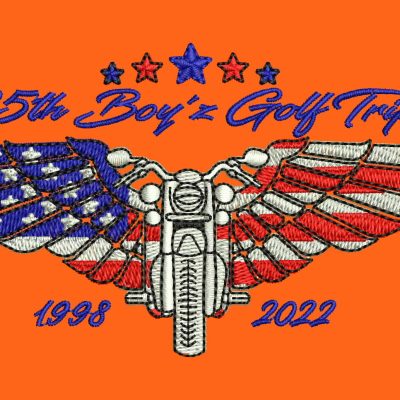High-grade Digitizing for Embroidery: Expert Craftsmanship
High-grade Digitizing for Embroidery: Expert Craftsmanship
Blog Article
Mastering the Embroidery Digitizing Process: Your Ultimate Overview
Embroidery digitizing is a precise craft that needs precision and experience to translate intricate styles into electronic layouts for device needlework. As craftsmens get started on this trip to understand the embroidery digitizing procedure, a detailed understanding of the fundamentals sets the foundation for excellence. Nevertheless, past the basic knowledge exists a realm of innovative software, specialized devices, and nuanced strategies waiting to be checked out. By diving into the subtleties of digitizing, one can unlock a world of imaginative opportunities and elevate their needlework tasks to brand-new elevations.

Comprehending Needlework Digitizing Basics
Embroidery digitizing fundamentals develop the foundation whereupon elaborate styles are equated into machine-readable styles for specific stitching. This first action in the needlework digitizing process is crucial for making certain that the last stitched item is a faithful representation of the initial design. Recognizing needlework digitizing basics entails grasping vital concepts such as stitch kinds, stitch direction, density, padding, and pull payment.
Sew types play a crucial function in figuring out the visual and textural outcome of the stitched design. By choosing the proper stitch kind, whether it be satin, fill, or running stitch, digitizers can achieve the desired impact and improve the general top quality of the embroidery. Furthermore, stitch instructions influences the flow and measurement of the style, while density figures out the spacing and coverage of the stitches.
Furthermore, rug stitching offers security to the design by securing the fabric and stopping distortion throughout the needlework procedure. Pull compensation is another essential consideration to combat the natural propensity of textile to contract when sewn. Mastering these needlework digitizing essentials is basic for producing professional-quality embroidered products.
Picking the Right Digitizing Software
Selecting the suitable digitizing software program is a crucial decision that significantly affects the performance and quality of the embroidery digitizing process. Digitizing for Embroidery. When picking the appropriate digitizing software program, it is necessary to consider aspects such as the intricacy of designs you prepare to develop, the user-friendliness of the software, the degree of customer assistance offered, and the compatibility with your embroidery maker
There are different digitizing software application alternatives offered in the marketplace, varying from fundamental programs for novices to innovative software program for expert digitizers. Some preferred choices include Wilcom EmbroideryStudio, Hatch Needlework Software, and PulseID. These software supply a large variety of devices and features to help you create complex layouts with simplicity.
Prior to choosing, it is advisable to discover the various software options through totally free trials or demonstrations to establish which one best suits your requirements. Additionally, reading reviews and looking for recommendations from seasoned digitizers can offer beneficial understandings right into the toughness and weaknesses of each software program plan (Digitizing for Embroidery). By meticulously assessing your demands and comparing the features of different digitizing software program, you can make an educated selection that enhances your needlework digitizing workflow
Digitizing Tools and Methods

Optimizing Design Settings for Needlework
Mastering the complexities of layout setups is fundamental in achieving optimal cause the needlework digitizing process, building upon the foundation laid by comprehending digitizing tools and methods. When optimizing style settings for embroidery, it is important to consider aspects such as stitch type, thickness, underlay, draw payment, and registration. Sew type option affects the overall look and feel of the layout, with choices like satin, fill, and running stitches using various textures and effects. Thickness describes the spacing and density of stitches, influencing the design's insurance coverage and sturdiness. Appropriate underlay stitching offers stability and stops fabric distortion, especially for intricate designs or on stretchy products. Draw settlement Continued changes for textile stretch during sewing, making sure precise style replication. Enrollment settings line up various components of the layout accurately, maintaining general style honesty. By fine-tuning these design settings, embroiderers can boost the quality and accuracy of their stitched developments.

Troubleshooting Common Digitizing Issues
When coming across typical digitizing concerns during the embroidery procedure, it is important to recognize the origin triggers and execute reliable services quickly. One common issue is stitch density issues, where stitches might be also thick, creating the fabric to pucker, or also thin, resulting in gaps in the style. Changing the stitch density setups in the digitizing software program can aid solve this issue.
Another constant obstacle is you can try here thread breaks during the needlework process. This can take place as a result of various factors such as incorrect tension setups, dull needles, or making use of low-grade thread. Guaranteeing appropriate maintenance of the needlework device, consisting of routine needle adjustments and tension changes, can minimize the event of string breaks.
In addition, layout enrollment errors can lead to misaligned components within the embroidery design. Inspecting the layout placement in the digitizing software application and making required adjustments prior to stitching can aid in preventing this concern. By resolving these usual digitizing issues promptly and successfully, you can make sure a smoother embroidery process and top notch ended up items.
Final Thought
Finally, grasping the needlework digitizing process requires a solid understanding of the basics, the best choice of software application, and understanding of devices and strategies. Optimizing style setups and repairing usual digitizing problems are important action in making sure top quality embroidery outcomes. By following these steps carefully, one can attain precision and effectiveness in the digitizing procedure.
Report this page